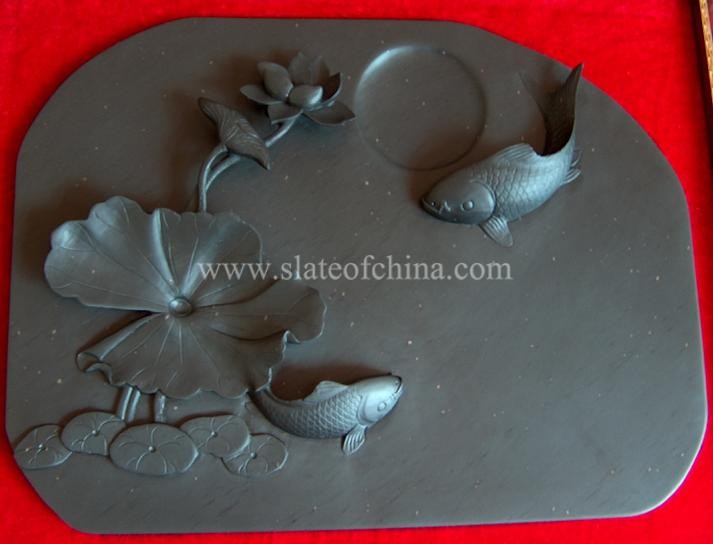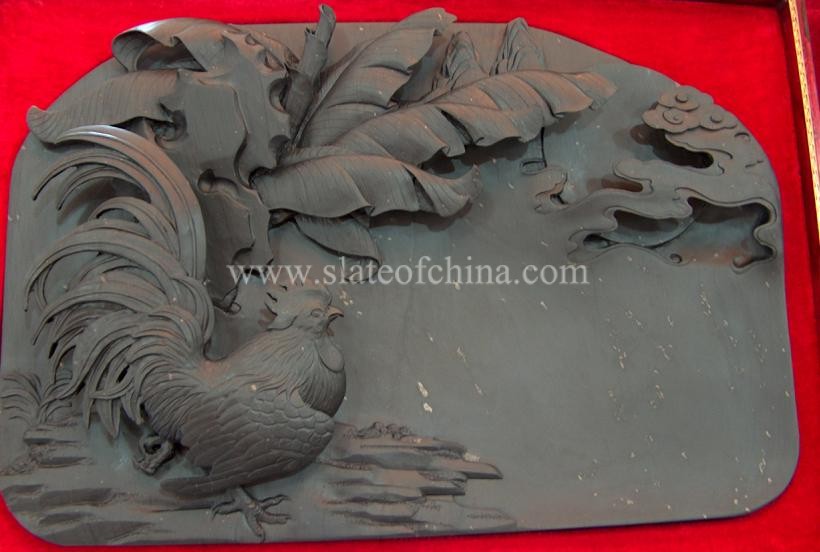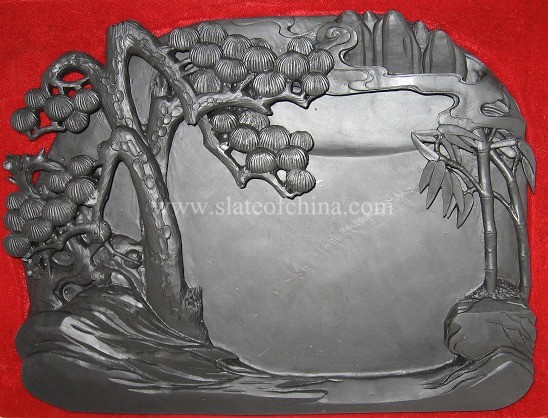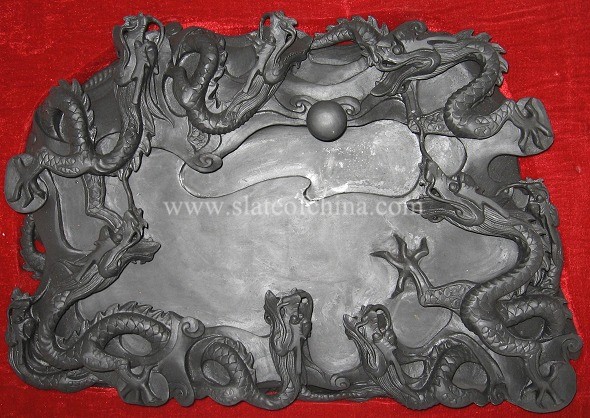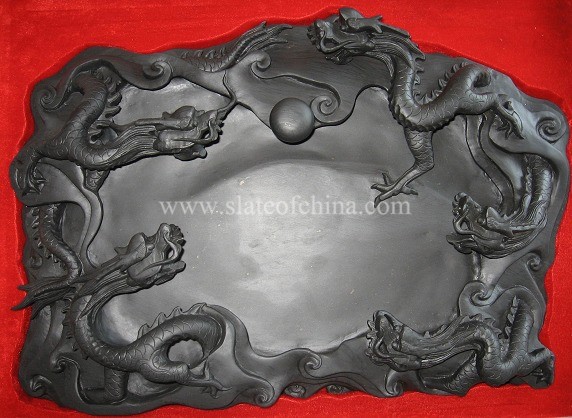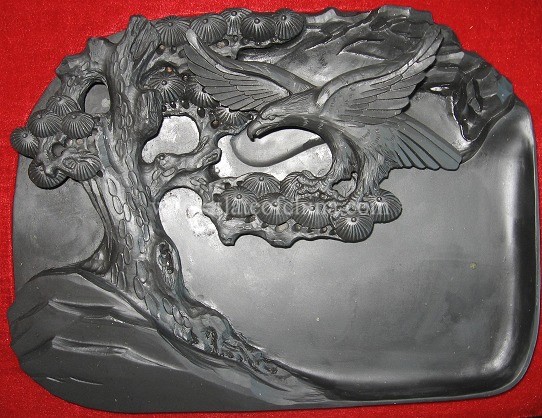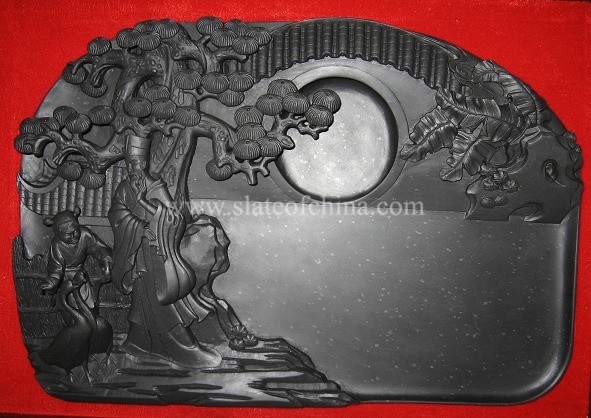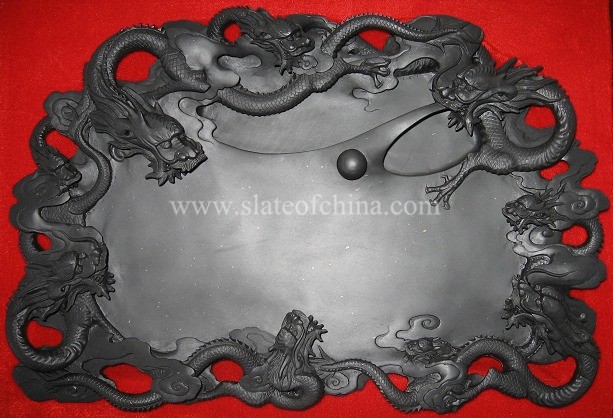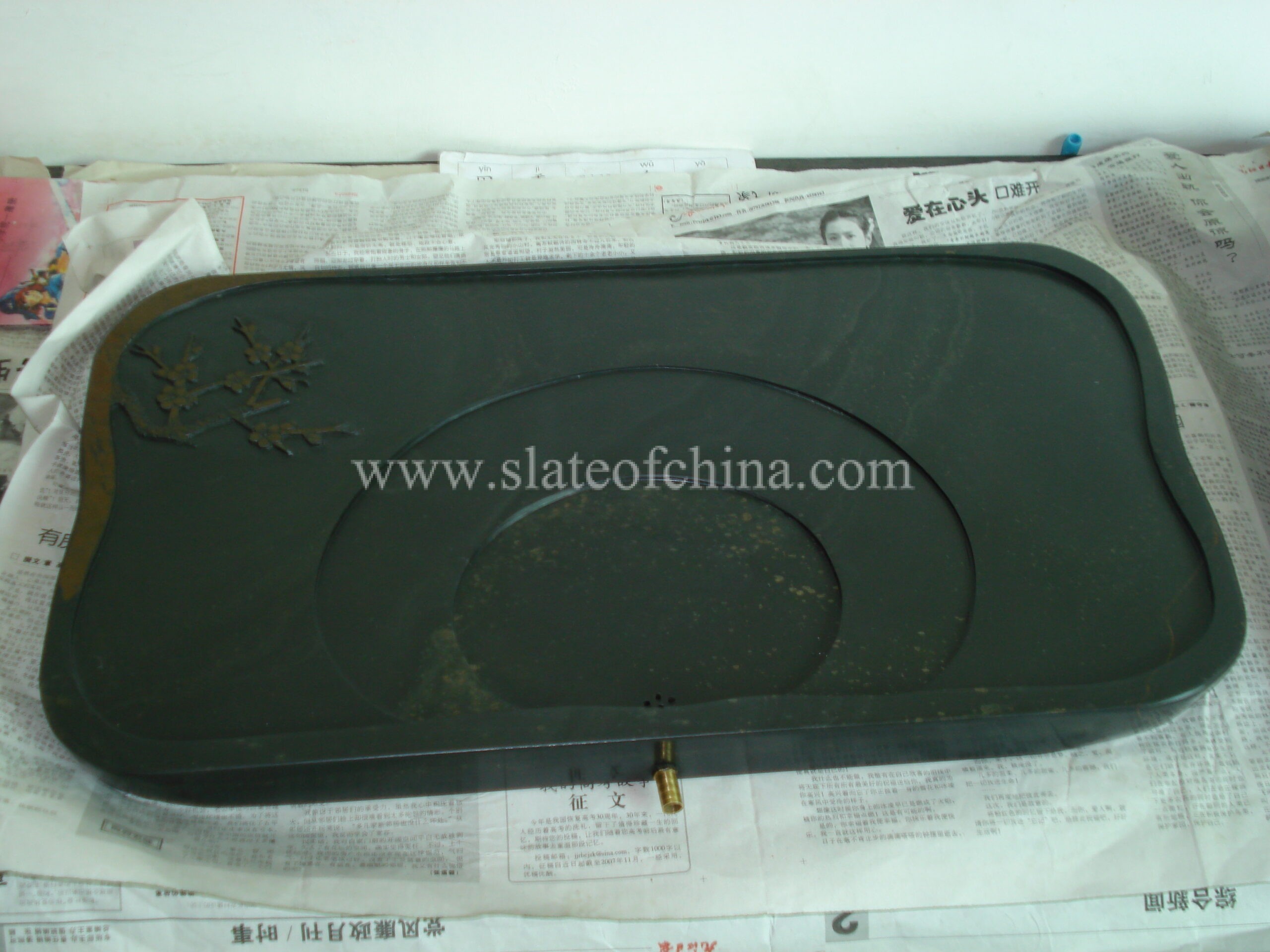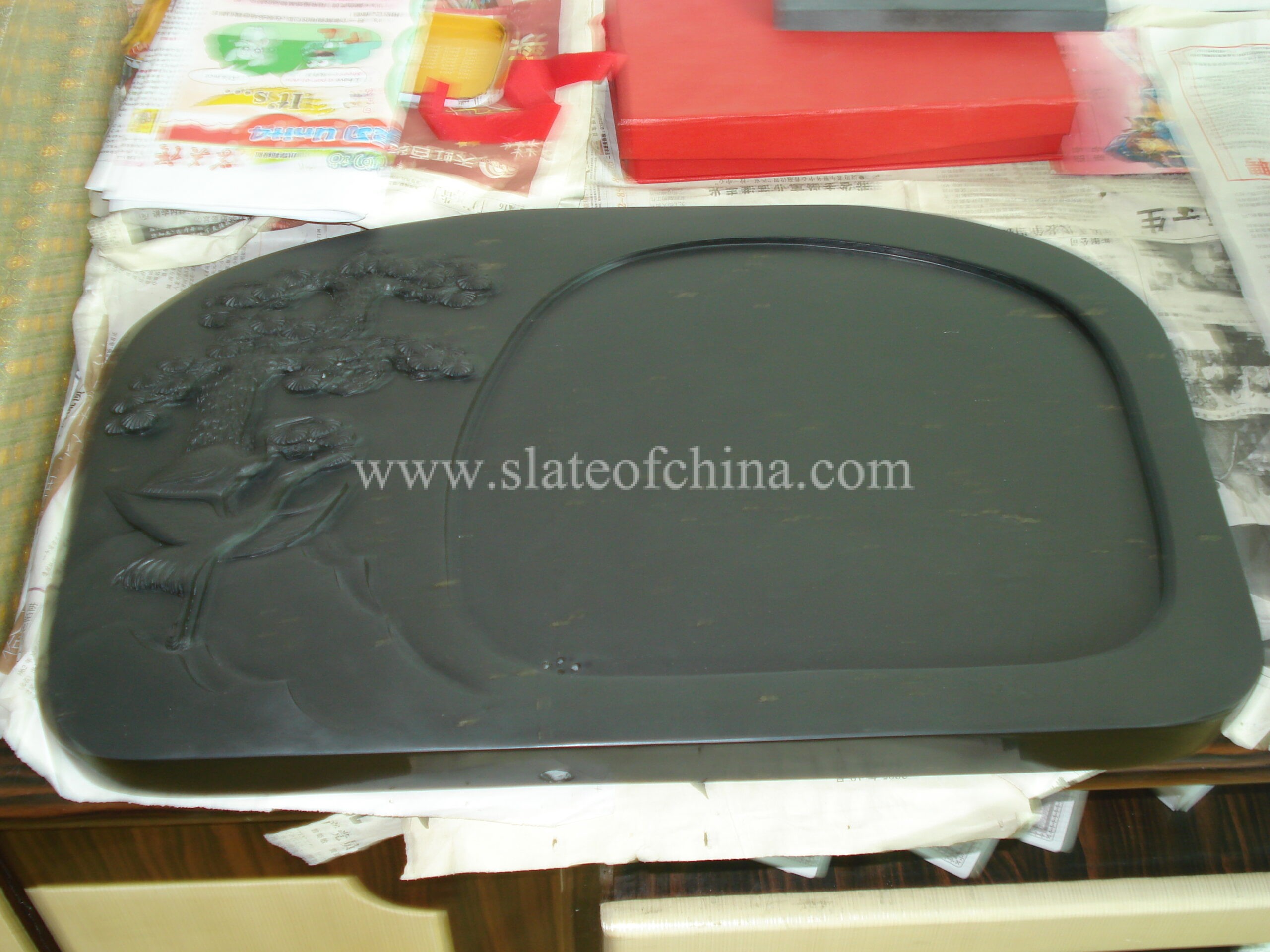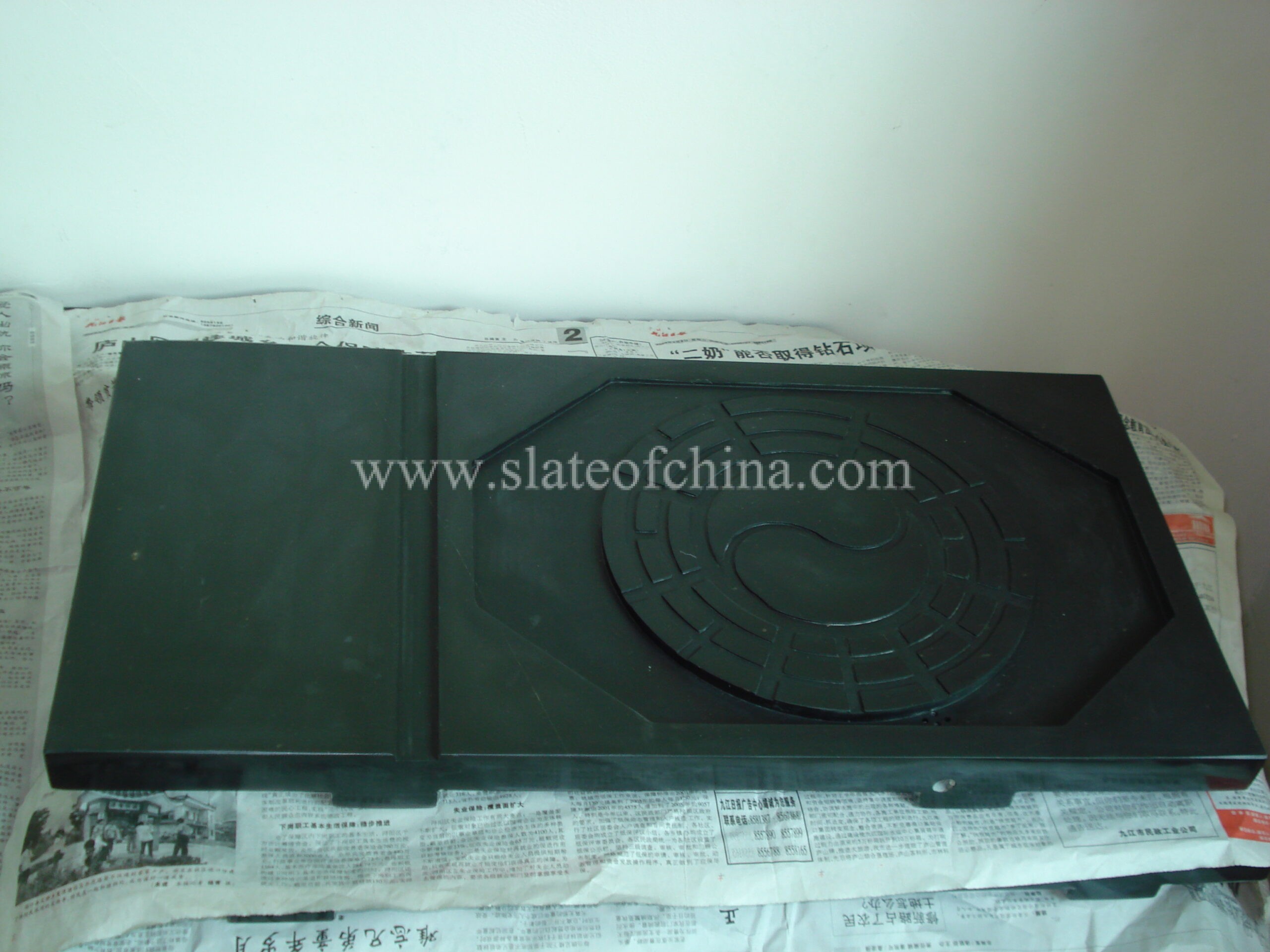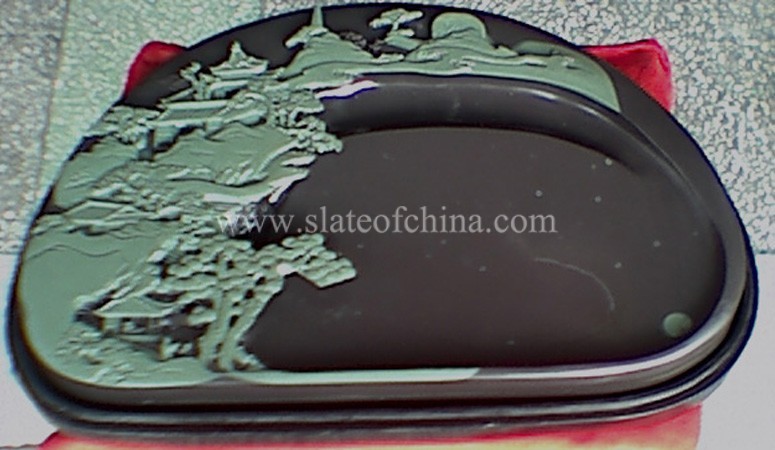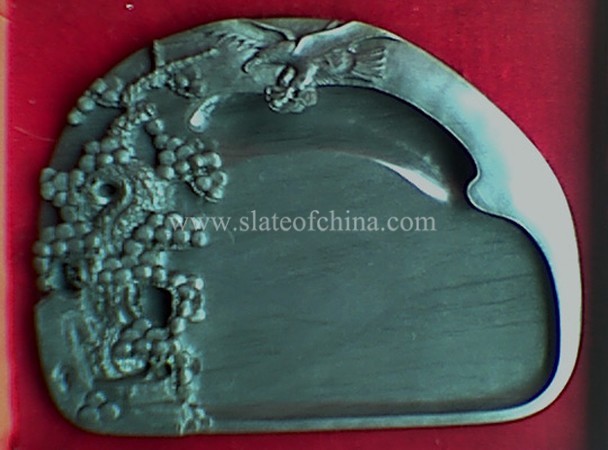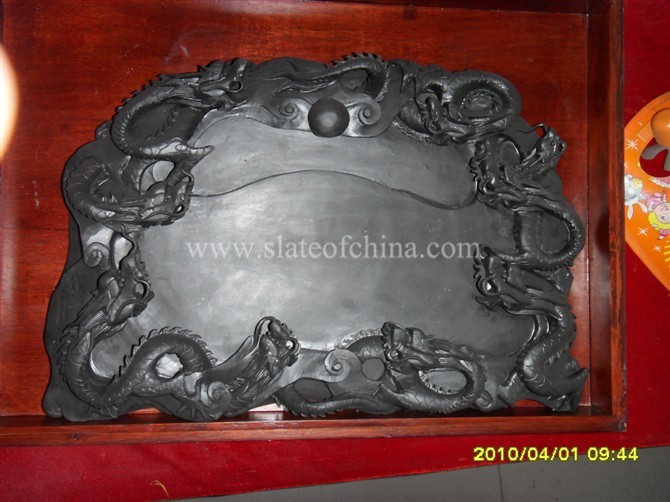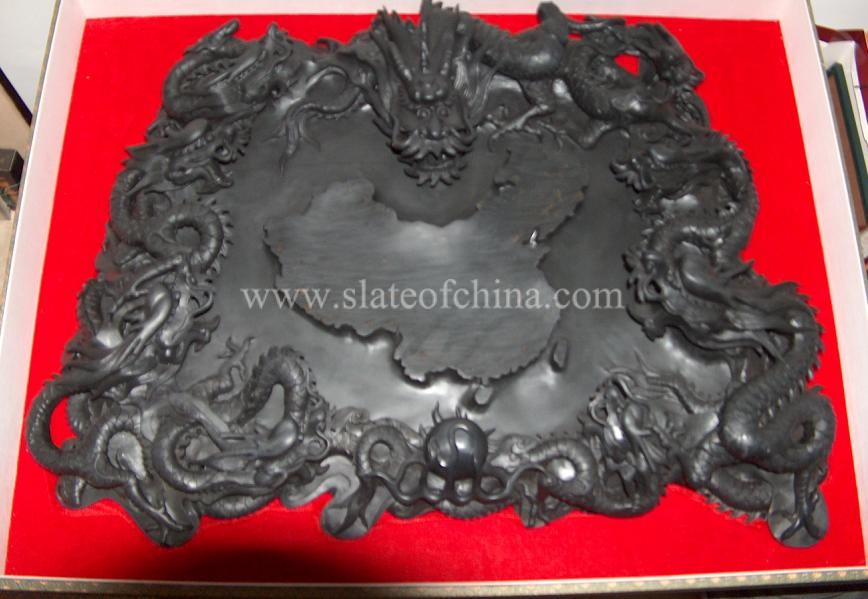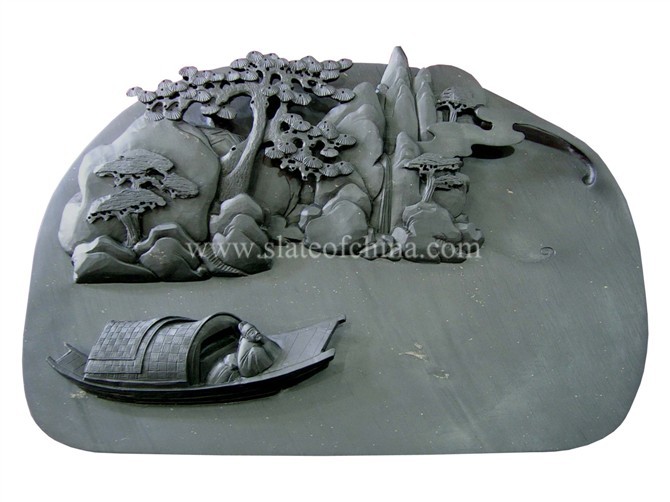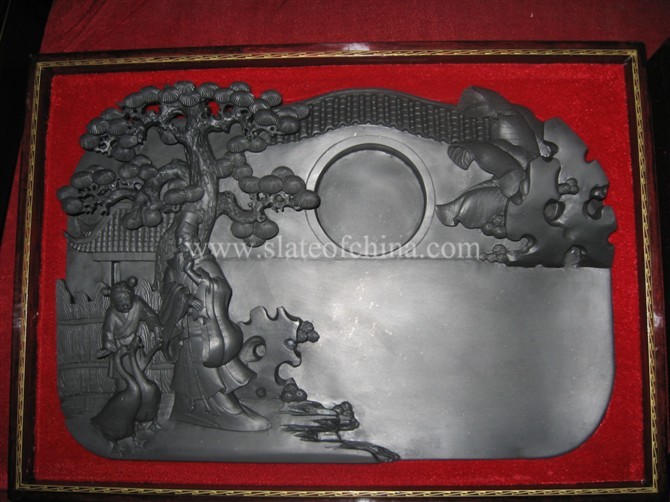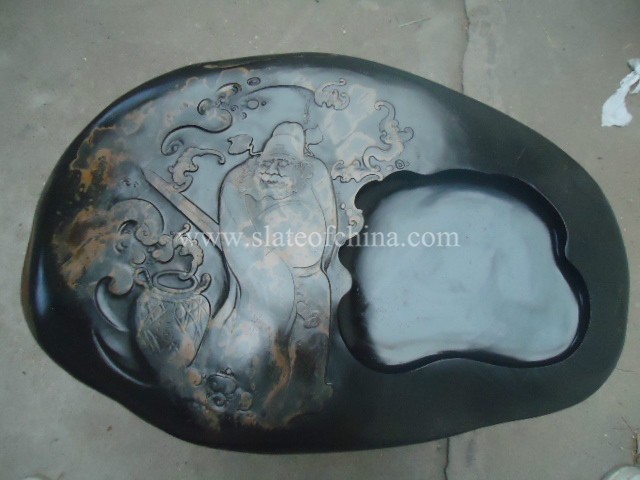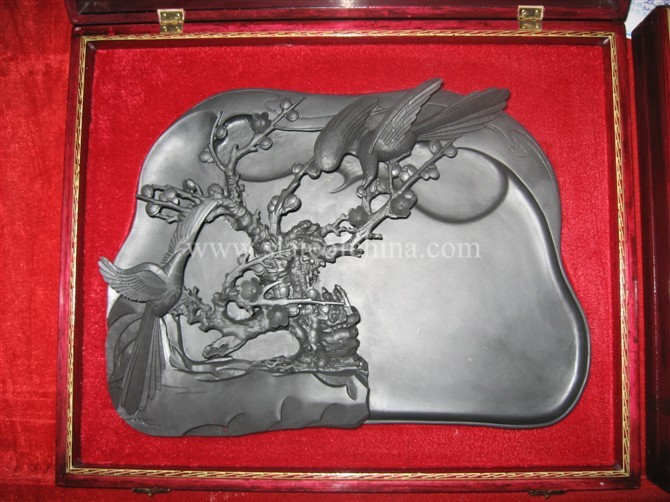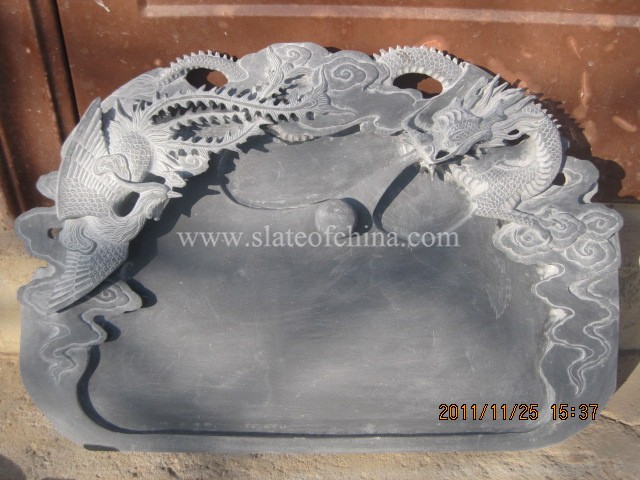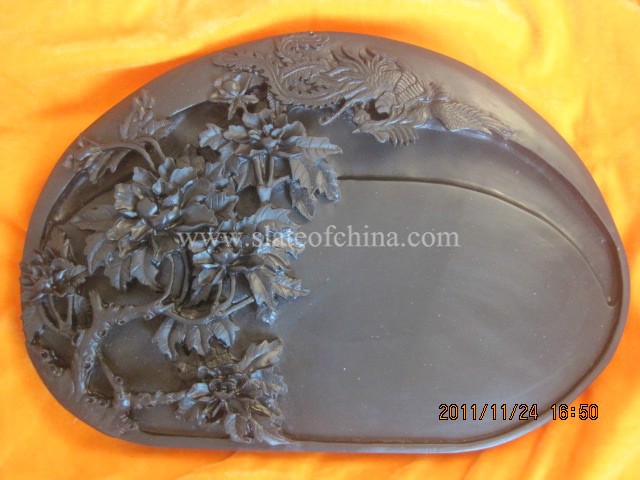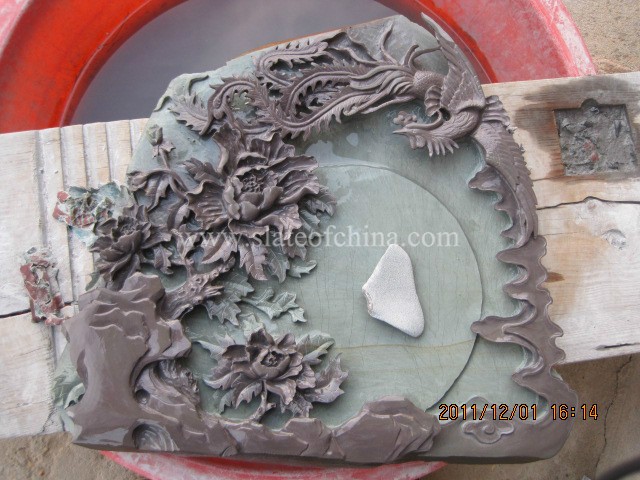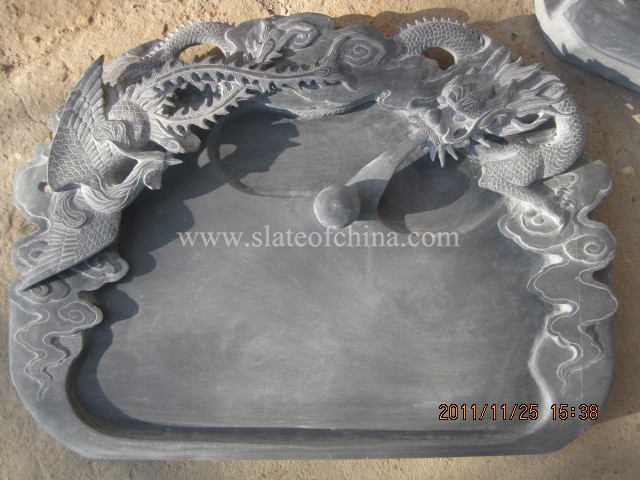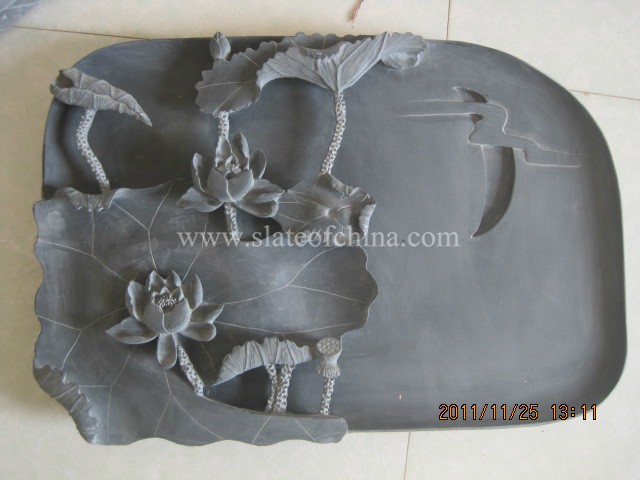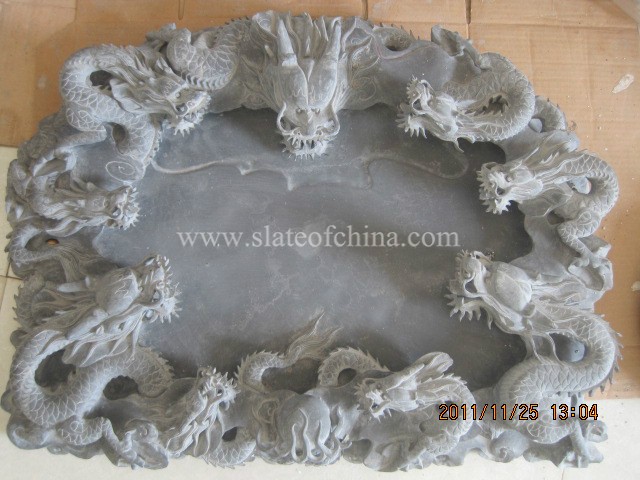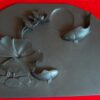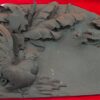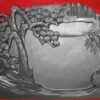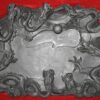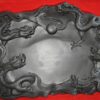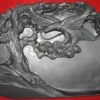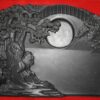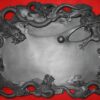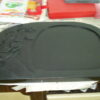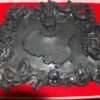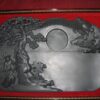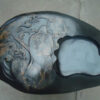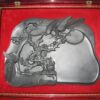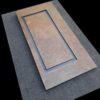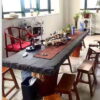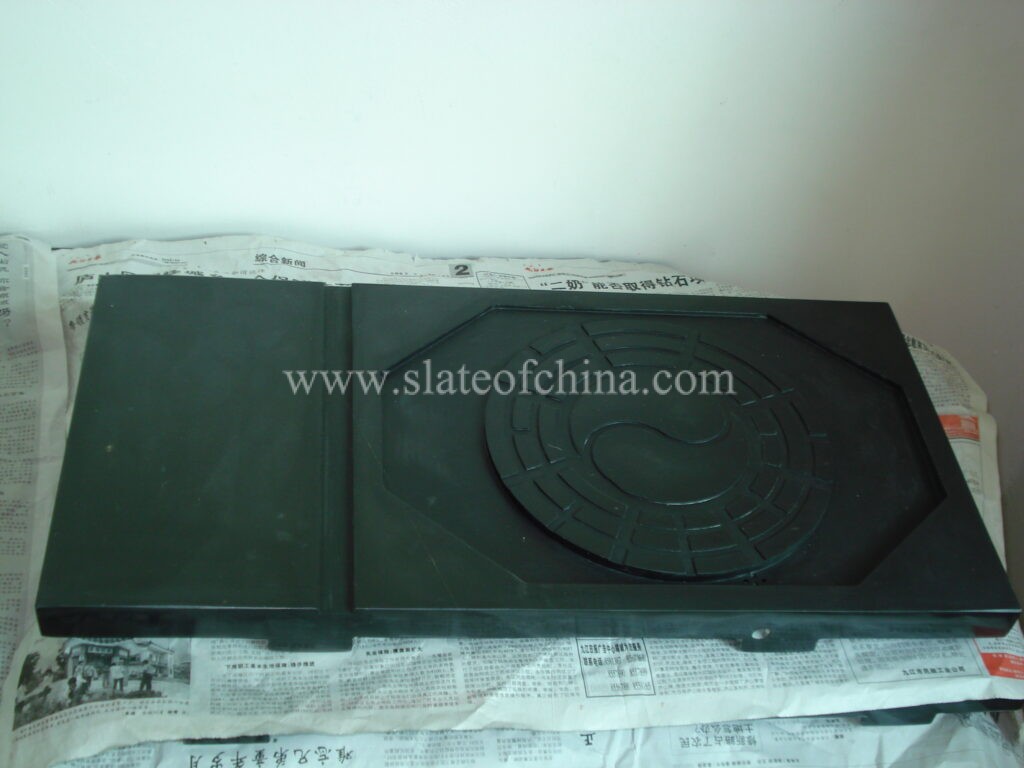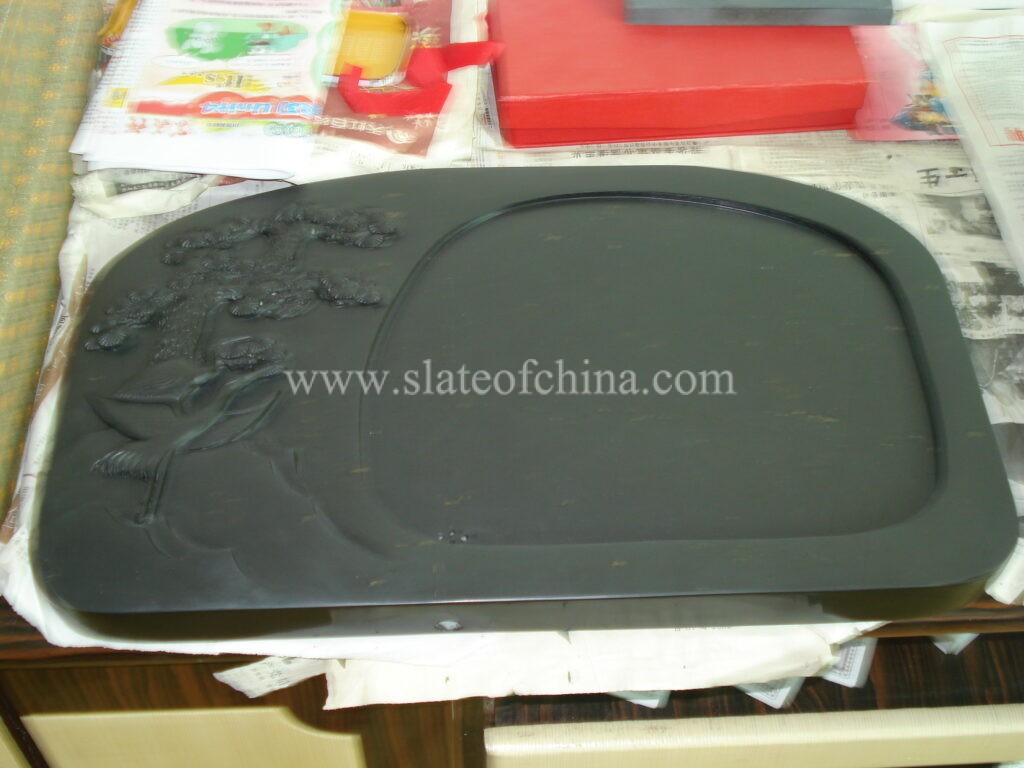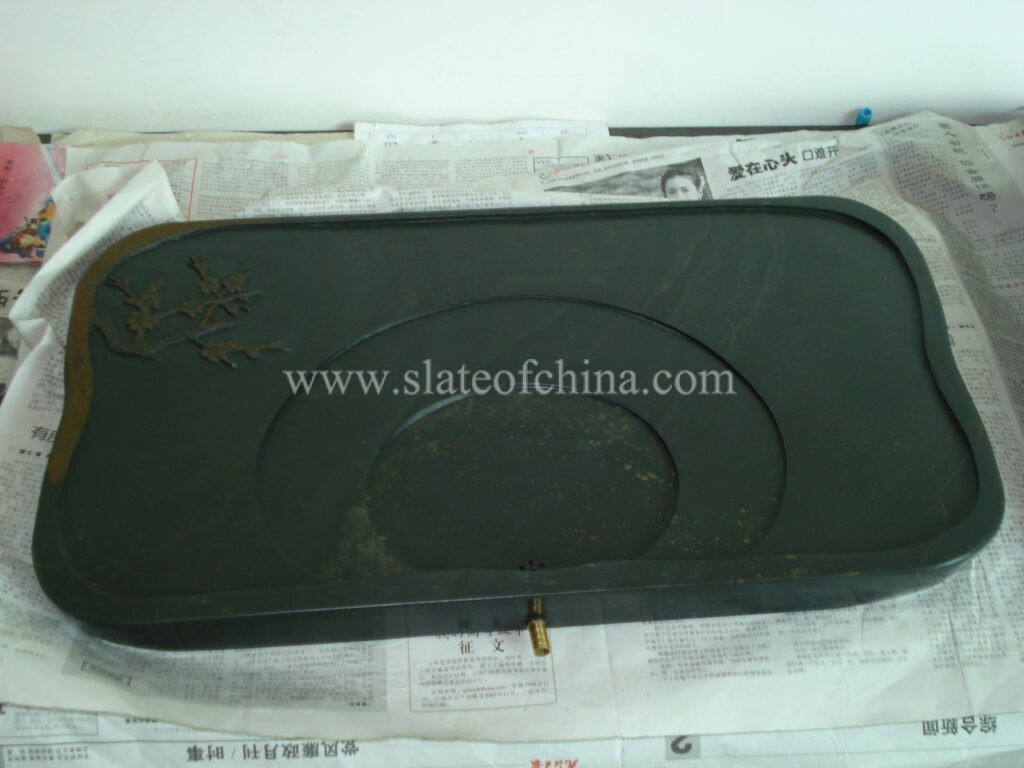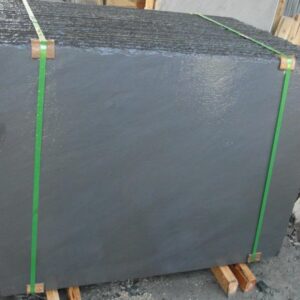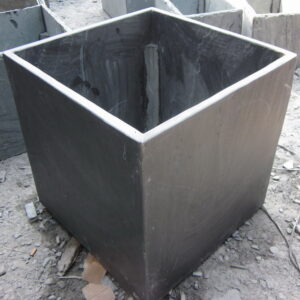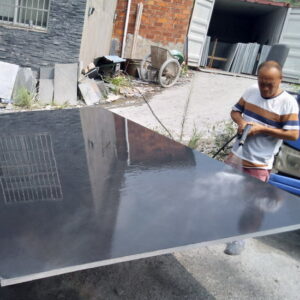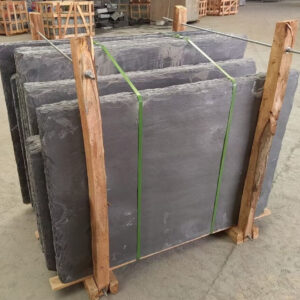Jiujiang is a region in China famous for producing high-quality slate inkstones, which are commonly used in Chinese calligraphy and painting. The Jiujiang slate inkstone has a smooth surface and high oil absorption capacity, which allows artists to grind ink into a fine paste that is consistent in color and texture.
The production of slate inkstones has a long history in Jiujiang, dating back to the Tang Dynasty over a thousand years ago. The slate used in the inkstones is sourced from local mines in the region and is known for its even texture and durability.
Aside from the functional benefits, Jiujiang slate inkstones are also regarded as cultural and artistic treasures of China. Many of them are intricately carved with ornate designs that showcase the craftsmanship and creativity of the stone carvers.
Slate inkstone is a surface made of slate that is used for grinding ink in East Asian calligraphy and painting. it has been used in china for thousands of years as a traditional writing instrument and is still used by many calligraphers and artists today.
The slate inkstone typically has a rectangular shape, with the grinding surface on top and a reservoir for water at one end. The grinding surface can vary in size, with larger inkstones being used for larger calligraphy works. The inkstone is used by rubbing an inkstick on the grinding surface with a small amount of water until the desired consistency of ink is achieved.
Slate inkstone has several advantages over other materials used for ink grinding such as ceramic or metal. it has a fine porous surface that allows for gradual and thorough grinding of the ink, resulting in a smoother and finer ink quality. additionally, the natural mineral composition of slate can help purify the ink while grinding, further enhancing its quality.
Our slate inkstone is an essential tool for traditional East Asian calligraphy and painting, and it is highly valued both for its practical functionality and aesthetic beauty.

